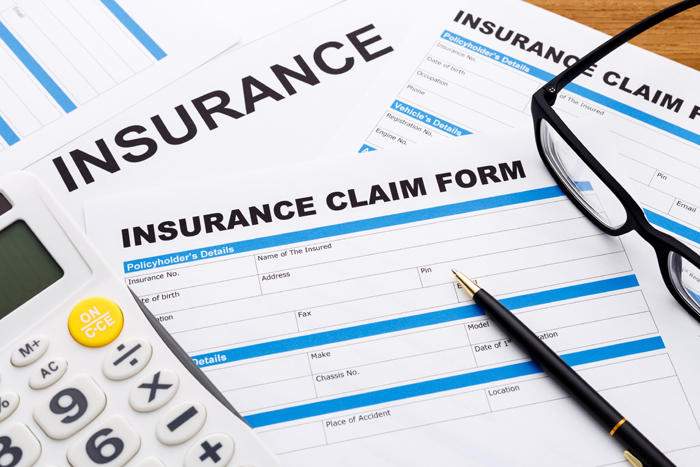When individuals or businesses file an insurance claim—whether after a car accident, a fire, a theft, or a liability incident—they enter a process that is far more detailed than simply filling out paperwork and waiting for a check. At the heart of every claim is a structured and often meticulous insurance claim investigation, where adjusters, analysts, and sometimes attorneys work to determine the legitimacy and value of the claim.
This article provides a detailed look inside the insurance claim investigation process, examining the key steps, the roles involved, and the legal and ethical considerations that guide insurers through this critical stage.
Why Investigations Are Necessary
Insurance is fundamentally about risk and trust. When a claim is filed, the insurer must evaluate whether:
The loss occurred.
The policyholder’s claim is covered under the terms of the policy.
The claimed damages are accurate and reasonable.
Is there any evidence of fraud, exaggeration, or misrepresentation?
Because insurance payouts can involve substantial sums of money, insurers are under a legal and fiduciary duty to conduct reasonable Insurance Claim Investigation before accepting or denying claims. Failure to do so could result in bad faith lawsuits or regulatory penalties.
1. Initial Claim Filing
The process begins when a policyholder notifies their insurer of a loss. This can be done via phone, online portals, or mobile apps. During this phase, the insurer collects:
Basic information: Date, time, and description of the incident.
Supporting documentation: Photos, police reports, medical records, repair estimates.
Policy number and details: To verify active coverage and applicable terms.
Many insurers issue a claim number and assign an adjuster at this stage.
2. Assignment of an Insurance Adjuster
The insurance adjuster is the central figure in the investigation. Depending on the type of claim, this could be a:
Field adjuster (for on-site investigations)
Desk adjuster (for claims handled remotely)
Special Investigations Unit (SIU) adjuster (for suspected fraud)
The adjuster’s role is to evaluate the claim based on policy terms, damages, and liability, if applicable. They may also consult external experts such as engineers, appraisers, medical professionals, or forensic accountants.
3. Coverage Verification
One of the adjuster’s first tasks is to review the insurance policy to determine if the claim falls within the coverage parameters. This includes:
Checking exclusions and endorsements
Confirming policy limits
Verifying premiums are paid and the policy is in force
For example, in a homeowner’s claim for flood damage, the adjuster will check if the damage is from a covered peril (since most standard homeowners’ policies exclude flood damage unless separately endorsed).
4. Fact-Finding and Documentation Review
This is the most intensive stage of the Insurance Claim Investigation. The adjuster gathers and analyzes all available evidence to support or refute the claim.
Key actions may include:
Interviewing witnesses or involved parties.
Taking recorded statements from the policyholder.
Inspecting damaged property (homes, vehicles, equipment).
Requesting medical or repair bills, estimates, or invoices.
Reviewing police reports or surveillance footage.
In high-value or complex claims, the adjuster may hire third-party investigators, such as:
Engineers to assess structural damage
Fire investigators to determine the origin of a fire
Medical consultants to evaluate injury severity
5. Fraud Detection and Special Investigations
While most claims are legitimate, insurance fraud is a multi-billion-dollar problem. Insurers use a mix of data analytics, behavioral flags, and human investigation to identify red flags, such as:
Suspicious timing of the loss
Inconsistent or vague explanations
Inflated or repeated claims
Lack of supporting documentation
When fraud is suspected, the claim may be referred to a Special Investigations Unit (SIU). SIU investigators often have law enforcement or forensic backgrounds and conduct deeper inquiries that can include background checks, surveillance, or collaboration with law enforcement agencies.
6. Determining Liability (for Third-Party Claims)
In liability-based claims—like car accidents or slip-and-falls—the adjuster must determine:
Who was at fault
To what degree each party was negligent
Whether contributory or comparative negligence applies (depending on state law)
This determination often involves analyzing witness statements, accident reconstructions, and legal statutes.
7. Evaluating Damages
Once coverage and liability are established, the insurer must determine the value of the loss. This step varies depending on the type of claim:
Auto claims: Appraisers inspect vehicle damage and assess repair or replacement costs.
Homeowners claims: Damage to structures and personal property is evaluated.
Injury claims: Medical records and bills are reviewed to calculate treatment costs, pain and suffering, and future care needs.
Business interruption claims: Accountants assess lost income, operating costs, and financial statements.
8. Claim Resolution and Payout
Once the investigation is complete, the adjuster makes a determination:
Approve the claim: Full or partial payment is issued based on policy limits and verified damages.
Deny the claim: A written explanation is provided citing policy terms and investigation findings.
Request more information: If documentation is incomplete or unclear, the investigation may be extended.
In many jurisdictions, insurance regulations require insurers to respond within a reasonable time, often 30–45 days from claim filing, unless more time is justified.
9. Disputes and Appeals
If a policyholder disagrees with the insurer’s decision, they have several options:
Internal appeal or reconsideration
Request for appraisal (common in property claims)
Filing a complaint with the state insurance department
Hiring an attorney or filing a lawsuit
Disputes may center around coverage interpretation, valuation of damages, or delays in handling.
Legal and Ethical Considerations
Duty of Good Faith
Insurers are legally bound to act in good faith and fair dealing. This means:
Investigating claims promptly and thoroughly
Communicating clearly and transparently
Not unreasonably denying or delaying claims
A breach of these duties can lead to bad faith litigation, where insurers may be liable for extra-contractual damages.
Privacy and Confidentiality
Insurers must protect the personal information of claimants and comply with regulations like HIPAA (for medical records) and state privacy laws.
Technology’s Role in Modern Investigations
The insurance industry is increasingly relying on technology to streamline investigations:
Drones and satellite imagery: For assessing property damage after disasters
AI-powered claims processing: For fraud detection and damage estimation
Mobile apps: Allow policyholders to upload photos and track claims in real-time
Data analytics: Help flag unusual patterns or duplicate claims
However, technology must be used ethically and should augment, not replace, human judgment, especially in complex or disputed cases.
Conclusion
The insurance claim investigation process is a cornerstone of fair and effective risk management. Far from being a rubber-stamp exercise, it’s a structured, evidence-driven procedure designed to ensure that valid claims are paid and fraudulent ones are denied.
For policyholders, understanding the steps and knowing their rights can lead to more informed interactions with their insurer. For insurers and legal professionals, thorough and lawful investigations protect against financial losses, legal exposure, and reputational harm.






